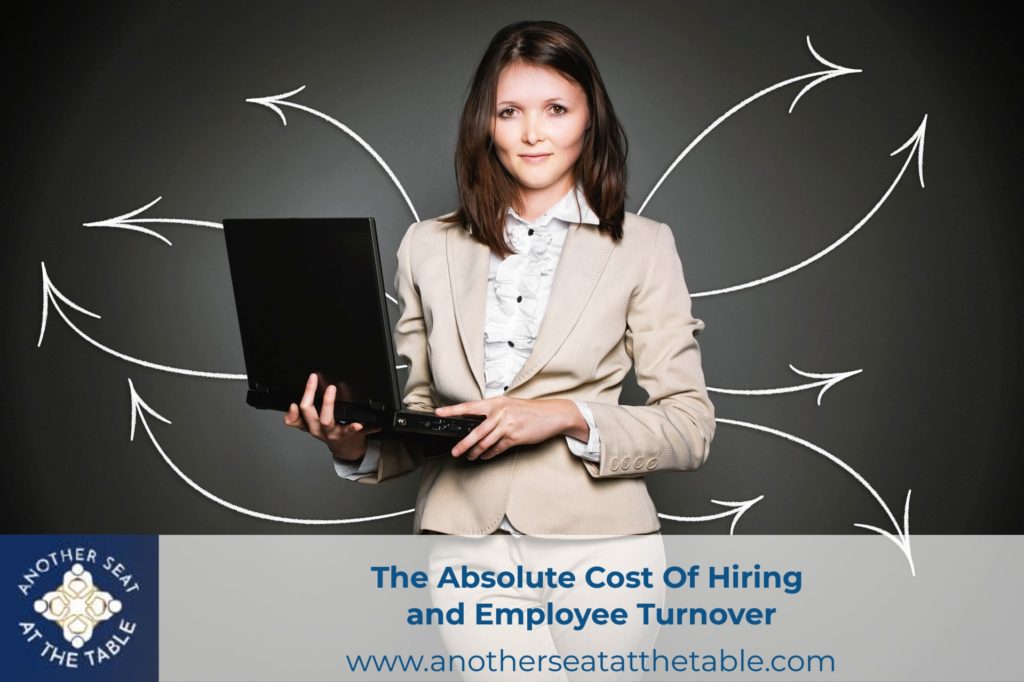
When it comes to businesses: raw materials, hiring, necessary machinery and marketing aren’t the only investments organizations struggle with… and this struggle extends into an indefinite period throughout the organization’s existence, may it be a well-established and large organization or a new and fresh startup.
From its very first day, the fundamental object of necessity for a business is workers. However, the entire process surrounding the fulfillment of that necessity also costs money, and a lot of people often forget that that particular cost is not restricted to mere employee salary (Mueller, 2020).ext
Hiring
According to a survey conducted by the Society for Human Resource Management, it is estimated that companies in the United States spend an average of more than 40 days and above $4000 just in the process of hiring and training an average employee (Alexandria, 2016).

And this cost is exclusive to merely the hiring stage; in order to attract the right employees, organizations have to advertise job openings, perform background checks, pay the internal recruiter, all of which requires a substantial amount of capital.
This can become a burden even for larger organizations because the larger an organization is, the more workforce it requires to continue meeting the demands. Additionally, the expenditure is not only exclusive to capital; companies can spend up to 40% of their time on trying to achieve goals that do not result in any form of monetary return, mainly hiring (Zivkovic, 2020).
Smaller companies may not require a dedicated HR department during their initial phases so they have to outsource the task of hiring expertise. This requires appointing some external recruitment expert to fill in, which also comes at a cost, but larger organizations are required to have a dedicated position in their organization for experts in hiring and firing employees i.e. an internal HR team, which is constant stress on the company’s own budget. But all of this result in a company full of a competent workforce able to meet the company’s demands, however extraordinary and/or demanding they might be.
Companies should also keep this in mind while calculating their entire cost and expenditure before making a decision. Furthermore, companies should not forget the necessity of having a diverse workforce. Not only is having a diverse workforce a corporation’s social responsibility, it also has statistically valid links to successful financial returns. According to research conducted by the McKinsey & Company, organizations with a focus on having a diverse workforce have a 33% higher chance of making more financial gains than their competitors (Cross and Braswell, 2019).
Employee turnover
Employee retention happens to be one of the most controversial topics in the scholarly family of business experts, and no one seems to agree on whether or not it is financially beneficial. However, what’s true is that employee turnover brings with it a lot of financial damages. Nearly all organizations suffer from employee turnover and it is mandatory that organizations should keep a calculation of it.
A retained employee gradually increases his worth inside the company (after being invested upon by the company during the hiring process), but once the employee leaves the organization, you have to incorporate into the statistic the settlement charges plus the capital required to hire and train the replacement and work with one until they reach the same value in the company the previous employee had.
Summary
While the costs of hiring and training appear almost formidable at a singular glance, it is necessary to recognize that this investment is, in a sense, an investment in the basic building material of the steps that’ll lead to productivity and return, therefore the stronger the stairs are, the less risky that climb to productivity will be. Companies are, therefore, required to direct the best of their attentions towards training employees and hiring the best of talent.
It’s better to, initially, identify and select competent candidates as opposed to continuing a career with them until they develop the necessary aptitude through means of trial and error, but even a good candidate requires training to adjust to a new environment. All of this, inevitably, leads to a lesser employee turnover, which is a massive financial burden on the company if allowed to happen freely and should be avoided in favor of employee retention.
If you are in search of someone who can help you with your staffing needs, then you are at the right place. Let us help you!

P.S. Here is how I can help…
💢 Strengthen your corporate culture – Another Seat At The Table

[…] at a much easier and faster rate, it also breeds employee satisfaction, which results in a low employee turnover rate, thus saving the company a lot of […]
[…] environment would not be able to retain the millennial employees for longer periods. As a result, employee turnover would be a problem to deal […]
[…] on the business. Another aspect is when there is no effective leadership, there is a high turn-over rate as workers do not appreciate working with ineffective […]
[…] Absolute Cost Of Hiring and Employee Turnover […]